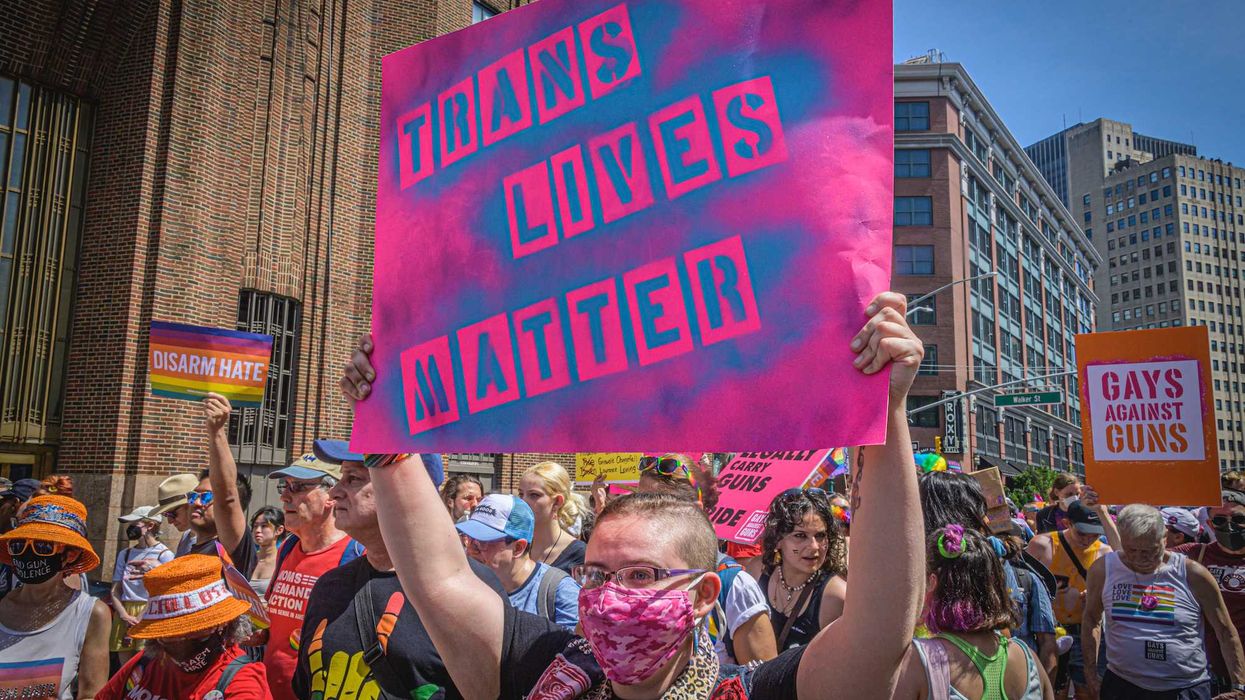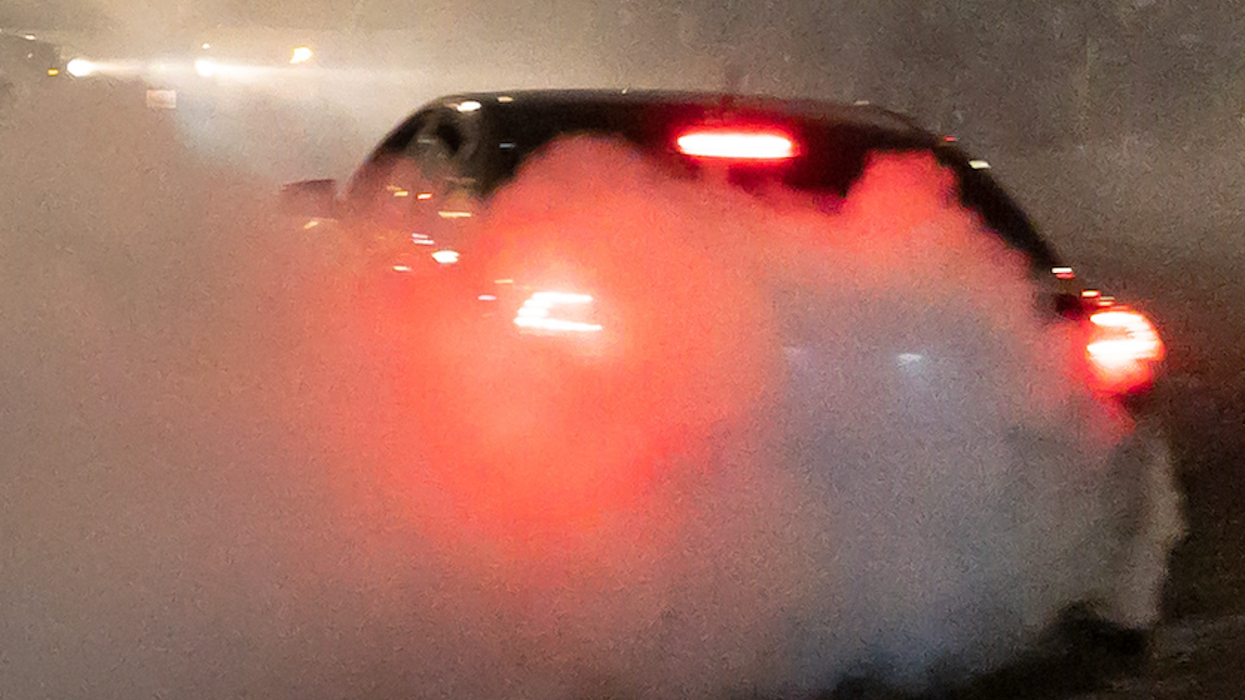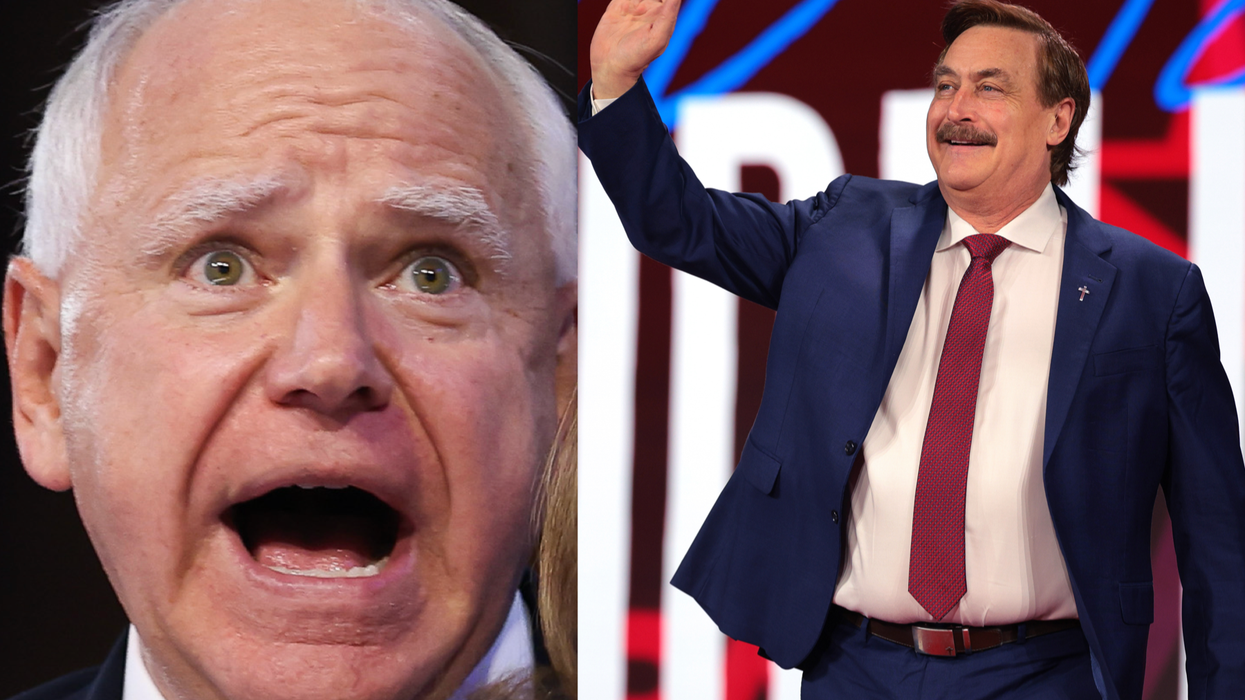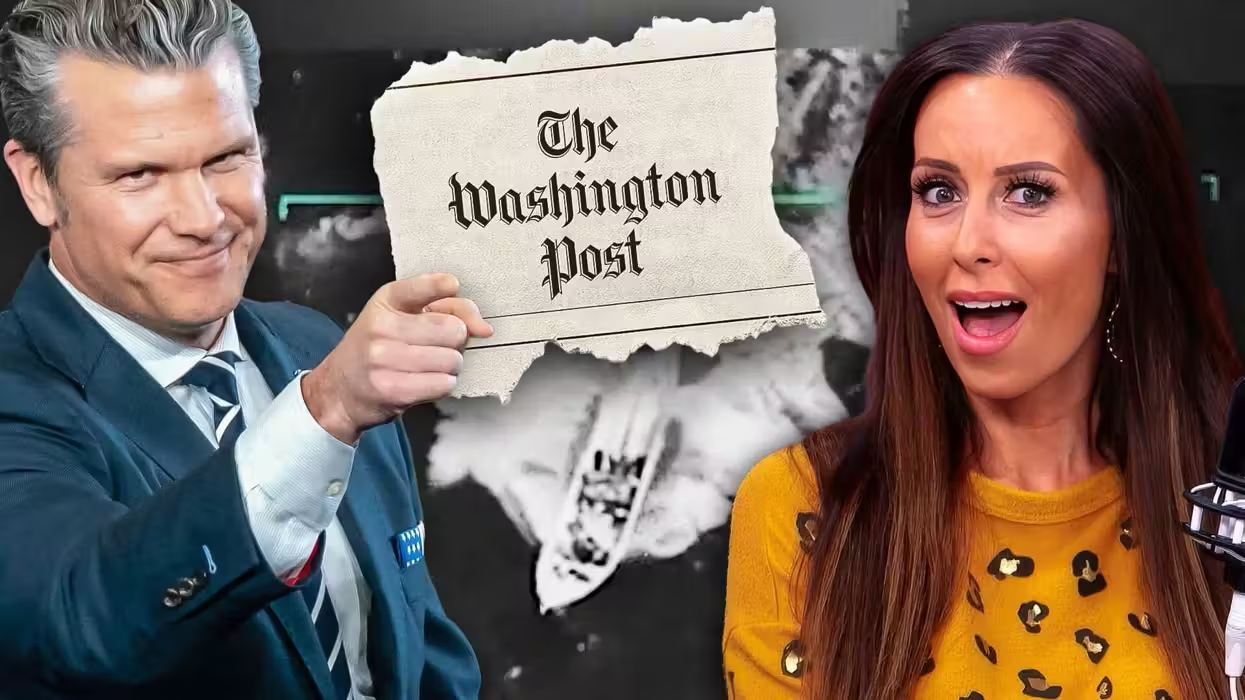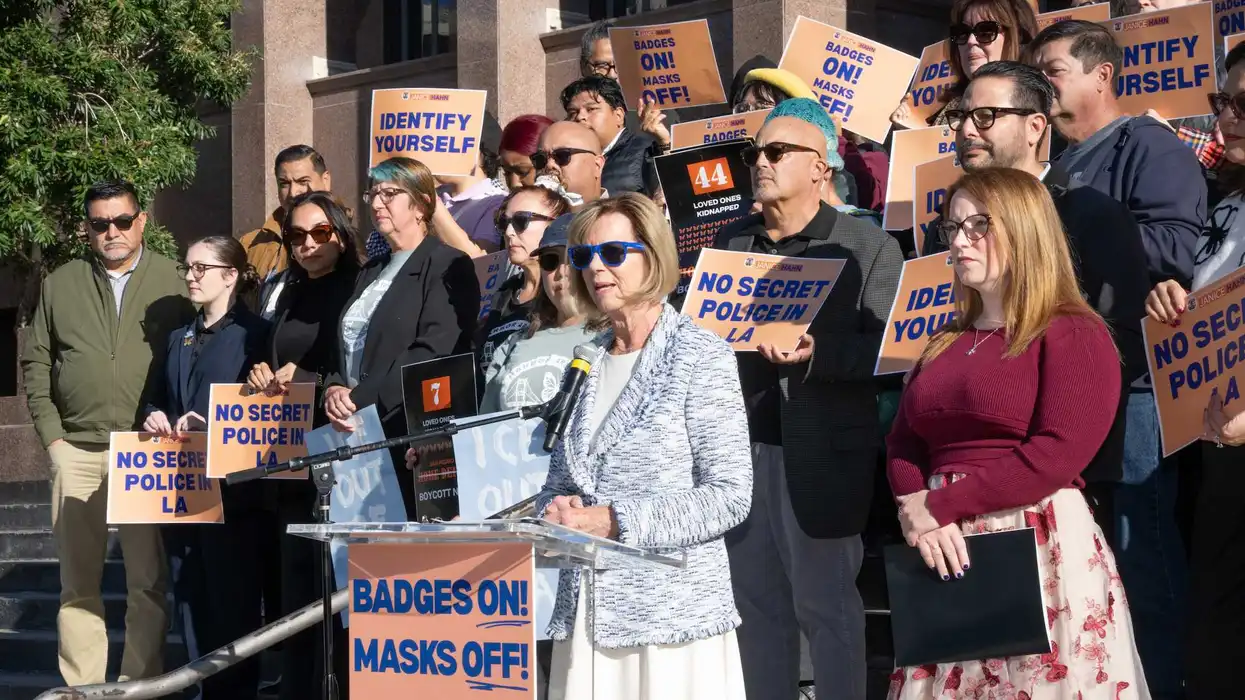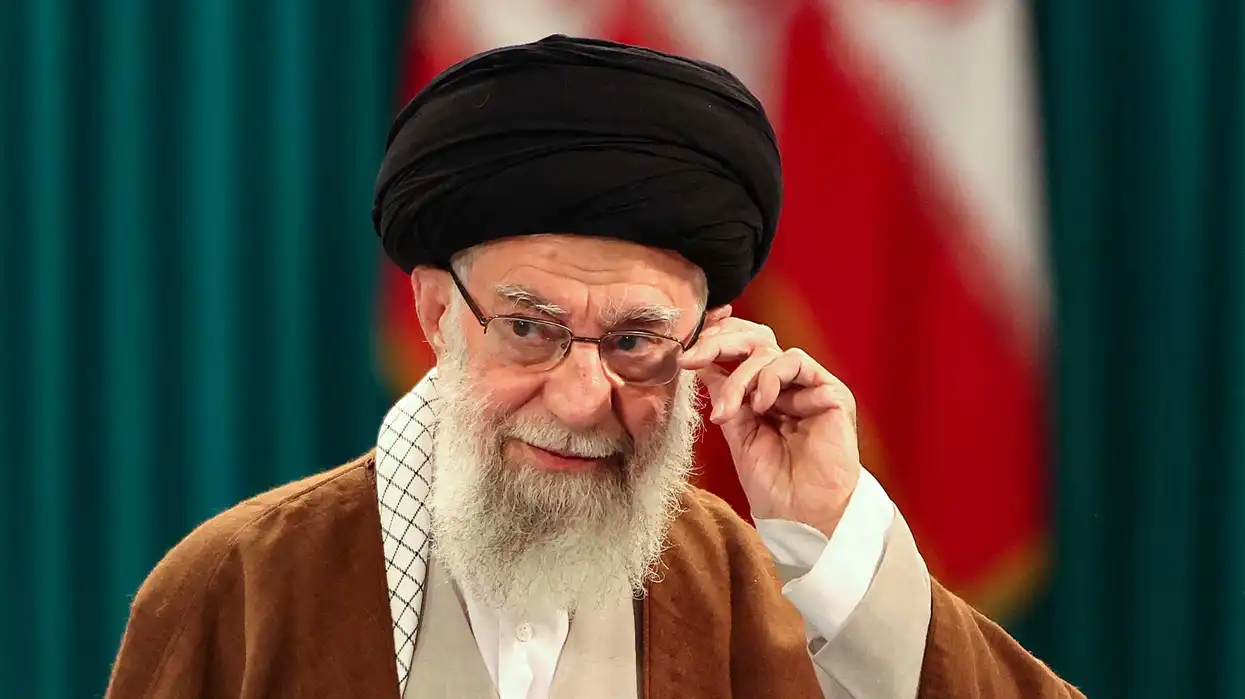© 2025 Blaze Media LLC. All rights reserved.
PHOENIX (AP) — Ten days before Christmas, ATF agent John Dodson awoke, got his morning coffee, switched on the TV news — and heard the words he had dreaded every day of every month he had been a member of the gun-trafficking investigative team called the Group VII Strike Force.
A Border Patrol agent had been shot dead in a gun battle with suspected bandits. The agent was 40, only months older than Dodson himself, another ex-military man who chose to serve his country by working for the U.S. government.
An all-too familiar feeling returned to the pit of Dodson's stomach, an awful mix of panic, fear and disgust that flowed from one haunting question:
In allowing guns onto the streets in hopes of knocking off a big arms-trafficking ring, had ATF's Group VII been unwitting accomplices in the death of a fellow federal agent?
Dodson had come to Phoenix to carry out a key component of ATF's mission: To stop gunrunning to Mexican drug cartels. The Bureau of Alcohol, Tobacco, Firearms and Explosives had stepped up efforts to dam the "Iron River" flowing south, and Group VII was supposed to be leading the way with an operation aptly called "Fast and Furious."
The focus was a group of individuals alleged to have bought more than 1,500 weapons in 15 months from Phoenix-area gun dealers on behalf of the cartels.
Some days, dozens of AK-47 variants would be purchased at once. The same buyer might return to the same store days later to buy 20, 30, 40 more weapons.
Dodson and the Group VII team often observed these buys from inside unmarked cars in the parking lots of the shops. But from the very beginning, he and other agents realized their mission in Phoenix wasn't to stop the guns at all.
"Stand down," the investigators were told whenever they sought permission to make a stop and attempt to retrieve the weapons. "Just surveil."
At times, agents followed buyers to their homes or drop points, but they would eventually be instructed to leave. They saw guns being transferred from one car into another, but then watched as that car drove away with the weapons.
In law enforcement parlance, the practice was known as "walking" guns. And the many hundreds of guns sold during Fast and Furious walked far: To border towns in Arizona, to El Paso and San Antonio, to remote reaches of Mexico — places like Tamaulipas, 1,400 miles from Phoenix, and Guerrero, 1,700 miles south.
On Dec. 14, two of them somehow found their way to a swath of Arizona desert called Peck Canyon, where Brian Terry and three other U.S. Border Patrol agents came upon a crew of border outlaws. Gunfire was exchanged, and Terry, his wrists decorated with bands that read "Honoring the Fallen," was shot in the back. He died amid the mesquite.
It didn't take long that next day for confirmation to reach Group VII: Two Romanian-made AK-47 type rifles had been found at the shooting scene. Both had been purchased nearly a year earlier. And the buyer was a known Fast and Furious suspect who was, immediately after the shooting, finally arrested though he'd been watched for months.
"I just felt sick," Agent Dodson says. "I still do."
Worse, he knew that hundreds more weapons sold as part of Fast and Furious were still out there in the hands of criminals who wouldn't hesitate to use them.
___
It was supposed to be the big case — the one that went beyond the buyers, the drug cartels' equivalent of pawns in a game of chess. Taking them out alone doesn't assure victory.
Fast and Furious had far loftier goals: To go after those directing gun buys on behalf of the cartels. Maybe bring down an entire trafficking cell. Or even cripple a cartel itself.
To try and capture a few kings.
A different kind of strategy was developed and put in motion. It went like this: Instead of working to interdict the many guns that were bought, ATF agents allowed weapons to move through the trafficking network in an attempt to identify additional conspirators and, ideally, build a bigger, stronger case.
It was a risky proposition for a typically risk-adverse agency, a strategy in which the consequences may not have been entirely thought through. But this puzzle had many more pieces that came together to complete the final picture: Gun laws that make curbing arms trafficking challenging. Several unsuccessful prosecutions. A government faced with a deadly, and growing, problem — and the need for a solution, no matter the hurdles.
By the time Fast and Furious was launched in the fall of 2009, gun violence in Mexico was clearly out of control. Daily news reports described bloody shootouts as drug cartels battled for power, and worry had increased about cross-border violence in the many burgs straddling the U.S.-Mexico boundary.
Mexico looked to the United States to both blame and beg for help. Its own stiff gun laws had long driven criminals north of the border to expand their armories, but better efforts to trace crime guns recovered in Mexico underscored the enormity of the problem.
By 2009, the ATF was reporting that some 90 percent of the weapons Mexican authorities recovered and submitted for tracing originated in the United States, and pressure was increasing from Mexican officials for the United States to address the issue. Even before he was sworn in, Barack Obama vowed to Mexican President Felipe Calderon that the United States would step up efforts to stop the trafficking of weapons south.
The question was how to do it.
Old strategies primarily targeted the straw purchasers who were paid to buy weapons for higher-level traffickers, but those cases could be difficult to make, especially in Arizona.
For one, there is nothing illegal about walking into an Arizona gun shop and buying an unlimited number of weapons, so long as the purchaser passes a federal background check. A crime occurs only when weapons are exported to Mexico or if individuals are acting as unlicensed dealers by buying and reselling large quantities of weapons.
Straw purchasers themselves are typically prosecuted for what's known as "lying and buying": making a false statement on the federal documentation they fill out when purchasing a gun by claiming they are the actual intended possessor when, in fact, the gun is for someone else. But even in those cases, courts have held that the evidence must show the gun was purchased on behalf of a "prohibited possessor" — a felon, for example.
All of these things can be tough to prove, and several cases had been tossed over lack of evidence. Most notable was one of the last big cases the Phoenix ATF investigated before Fast and Furious — the widely publicized probe of gun shop owner George Iknadosian, who was accused of knowingly selling hundreds of guns to straw buyers.
In March 2009, a judge threw out the case against Iknadosian, noting that the weapons were purchased legally and there was no proof that they ultimately wound up in the hands of unlawful possessors. It was a hard pill to swallow, and the lead agent on that case, ATF special agent Hope MacAllister, would go on to become the lead case agent for Fast and Furious.
"You have a lot of worlds colliding," said James Cavanaugh, a retired ATF supervisor who negotiated a cease-fire with the Branch Davidians following the bureau's botched 1993 raid in Waco, the last major scandal to embroil the ATF. "You have the war on the border. Prosecutors who are overly skittish on taking a gun case" because of the laws and gun culture in Arizona but also, said Cavanaugh, because they'd been "burned by other cases."
There was also a growing desire in both the Justice Department and the ATF to move beyond straw-purchase investigations, considered the equivalent to arresting a corner drug dealer to try to stop drug smuggling. In search of a more meaningful solution to the overall trafficking problem, the Justice Department in the fall of 2009 began developing a revised strategy that concluded "merely seizing firearms" wouldn't end gun smuggling. Rather, it said, the focus should be on finding ways to investigate and eliminate an entire trafficking network.
"It was with this guidance in mind that Operation Fast and Furious originated," the former head of the ATF in Phoenix, William Newell, told a congressional committee Tuesday.
The Justice Department's Office of Inspector General then began a review of ATF gun trafficking efforts, a report that criticized the agency's "low-level investigative focus" and recommended "developing more complex conspiracy cases" against those further up the food chain.
Soon, the ATF issued its own reworked policy, calling for a more "creative" approach to gun probes and suggesting that straw purchasers be viewed as a stepping stone to identifying other members of a gun trafficking operation. The document noted that such a strategy was already being used in several ATF field divisions. Places like Phoenix, where ATF supervisors acknowledged in a memo summarizing Fast and Furious back in January 2010 that their strategy was to "allow the transfer of firearms" to take place in order to identify co-conspirators.
All of this led to a dramatic shift in tactics: ATF agents could let guns go in order to make a more substantial case. The ATF memo called it "limited or delayed interdiction," and seemed to anticipate what this would mean in terms of weighing risks vs. benefits. It warned that "practical considerations" may require bringing investigations to a quick close. Those included probes in which "numerous diverted firearms ... are being used in violent crimes and recovered by law enforcement."
It's an approach that some longtime ATF agents found astonishing.
"I can tell you in every case I was involved in, the bureau would've been afraid to let the guns go," said William Vizzard, who worked almost 30 years doing gun investigations for ATF and later taught criminal justice at California State University. "There was always the obsessive fear that if a gun goes out there ... it may be misused and traced back to you, and the political implications are terrible."
Mike Bouchard, a former assistant director for field operations, said the endless criticism may have left some at ATF figuring, "No matter what we do we're going to get beat up. Take off the little guy, people say you're not going after big enough people. Take off big people, these are the risks. ... And I'm not sure people thought of the risks that come along with going after the big guys."
That's not to say that guns were never "walked" in past ATF investigations, former agents said. The difference is how it was done.
Jay Wachtel worked more than two decades as an ATF agent in Arizona and California, where he ran his own gun-trafficking unit. He now teaches firearms law and policy at California State University, Fullerton. Letting guns walk has been a practice, he said, so long as it is done in a controlled manner that involves surveillance — and eventual seizure — of the weapons.
"The idea was that you would follow it long enough until you were sure you had enough probable cause" to make a traffic stop or get a search warrant or initiate an arrest, he said, or do what's known as a "knock and talk" — approach a suspect and see if he'll spill the beans. But letting guns walk into Mexico was unheard of, he said.
Wachtel recalled a few times in his career in which loads were lost — including one suspect with 20-30 guns that his team lost in traffic — and the devastation agents felt.
"You have to be an idiot not to worry about what happens with guns," he said. "We used to lose sleep."
The very same fear gripped some members of Group VII from the start.
___
They began assembling in Phoenix around December 2009 — excited, at first, to be on the front lines of a major border gun case.
The seven-member team included Larry Alt, an 11-year ATF veteran with a law degree; Olindo "Lee" Casa, a transfer from Chicago with 18 years under his belt; and Dodson, who had worked counter narcotics in the Army and the Loudoun County Sheriff's Office in Virginia before joining ATF around 2004.
Everything seemed to be in place: A number of suspected straw purchasers had already been identified, and several area gun dealers had been briefed on the investigation and asked to partner with ATF in alerting the agency whenever a suspect came in.
One day soon after their arrival, Dodson and Casa were dispatched to a shop to observe a suspect who was about to make a buy. From the parking lot, the agents watched as the suspect walked out with numerous assault rifles. They got on the radio and asked the lead case agents: At what point are we going to take him?
Just follow, came the response.
Dodson figured they were going to execute a search warrant. Instead, after following the suspect back to his house, he was stunned when the order came down to end surveillance and leave. The guns stayed with the suspect.
It happened again and again. As the case progressed and wiretaps went up, agents began regular surveillance of the straw purchasers, taking pictures and video. Agents would sometimes watch buyers meet with the moneymen, then follow them to the gun shops and wait outside as they went in and purchased the weapons, then follow them back to a house or business where the guns were passed on to someone else.
Still, when agents inquired about making stops, their supervisors said no.
"On several occasions I personally requested to interdict or seize firearms in such a manner that would only further the investigation, but I was always order to stand down and not to seize the firearms," Casa would later tell congressional investigators.
"Prior to my coming to Phoenix ... I had never witnessed a situation where there wasn't at least an attempt to interdict or take the firearm at some point," said Alt.
Dodson began asking just about anyone who would listen: What's the plan here?
"Essentially the attitude was ... 'We know what we're doing. The U.S. attorney's office is on board with this. This is how it works,'" Dodson said.
Firearms dealers were regularly providing purchase forms and receipts to the ATF whenever the identified suspects made buys, and then Group VII agents would enter that information — serial numbers, the buyer's name, the type of weapon — into a database meant to help trace guns once they were recovered.
The idea was if the guns were recovered, authorities in the United States or Mexico could initiate a trace — and the ATF would have more evidence in their case against members of the gunrunning scheme. They might also identify additional suspects across the network.
It didn't take long for that database to start getting hits. In November 2009 some 37 weapons purchased by known Fast and Furious suspects were seized by Mexican authorities across the border from Arizona.
By mid-January 2010, more than 20 individuals had been added to the ATF's "suspect person database" as alleged Fast and Furious straw purchasers. Among them was Jaime Avila, who later that month purchased the weapons that would be found at the scene of Brian Terry's shooting. By February, some 200 Fast and Furious guns had been recovered in Mexico.
Over weeks and months, the buying frenzy continued. In just one month, the targets of Fast and Furious purchased 359 firearms. One suspect alone would purchase more than 600 guns himself after he had been identified as a suspect in the probe, according to internal ATF records turned over to congressional investigators.
Among Group VII, dissent quickly set in. Dodson, Casa and others complained about the strategy and warned of its potentially deadly consequences. At one point Dodson pointedly asked his case agent, MacAllister, if she was prepared to attend the funeral of a border agent or sheriff's deputy killed with one of the walked guns.
Alt was predicting that someone would eventually have to answer to Congress. Later he would say: "I was in agreement with Agent Dodson that someone was going to die."
By March 2010, the group supervisor, David Voth, sent out an email about a team meeting to address a "schism" developing within Group VII. Saying the agents needed to "get on with the mission at hand," he wrote that people of "rank and authority ... believe we are doing what they envisioned the Southwest Border Groups doing."
He called Group VII "the tip of the ATF spear" in border arms trafficking, adding: "I will be damned if this case is going to suffer due to petty arguing, rumors or other adolescent behavior."
But soon, the agents weren't the only ones voicing concerns. Gun dealers also grew wary as more and more weapons were sold.
Speaking on condition of anonymity because of ongoing inquiries, one dealer described the pace of the sales as "unprecedented ... It had never happened like that before."
Still another said that because of the volume, "our sales people would go behind the door and have a direct dial to ATF, speak to somebody and they'd say, 'Yup, they're on our list. Go ahead and make the sale.' Otherwise, we probably wouldn't have."
One dealer even met with Voth and the lead prosecutor on the case, Assistant U.S. Attorney Emory Hurley, to seek assurances that guns weren't going south of the border. That same dealer emailed Voth in June 2010, saying he was worried for friends who were Border Patrol agents.
"I want to help ATF with its investigation but not at the risk of (agents') safety," wrote the dealer. Voth earlier had emailed the same gun shop owner, saying: "If it helps put you at ease we (ATF) are continually monitoring these suspects using a variety of investigative techniques which I cannot go into detail."
Among agents on the ground, there was a sense of foreboding. When a pregnant U.S. consulate worker was fatally shot across the border from Texas, there were rumblings: What if the murder weapon was a "Fast and Furious" gun? When Voth sent around emails citing the alarmingly high number of drug-related murders every month in Mexico, Dodson wondered whether ATF was, in some way, responsible.
"You would just hear: Nine people killed. Six people," he remembered. "But you never saw a picture."
Never, that is, until Terry was shot.
The very day after the shooting, ATF agents arrested Jaime Avila. According to court documents, Avila allegedly admitted on the spot to buying some 40 AK-47 variants.
Dodson, who had been transferred out of Group VII several months earlier, figured that at last his supervisors would admit mistakes had been made. Then he saw the ATF's initial investigative report regarding the shooting, and it made no mention of the fact that Avila had been a known suspect for months on end.
Fearing a potential cover-up, he tried calling the ATF's chief counsel in Washington but got no reply. He called the inspector general's hot line and again got nothing.
Then he learned that U.S. Sen. Chuck Grassley's office might be looking into the operation and sent a note via an email address set up for potential whistleblowers.
Talk to me, he wrote.
___
Seven months later, Fast and Furious has fast become a political thorn for the Obama administration, prompting calls for the resignation of ATF's acting director, stirring the debate over gun control and straining relations with Mexican officials. Attorney General Eric Holder has ordered the Justice Department's Office of Inspector General to look into what happened, and Obama has vowed to take "appropriate actions."
Meanwhile, a parade of ATF agents have come forward, offering astonishing testimony in condemnation of their own employer over a probe they now call embarrassing, shameful, dumbfounding. They include some of the Group VII agents, including Dodson, Casa and Alt, but also another Phoenix-based supervisor, an ATF intelligence specialist and three Mexico-based agents.
"Put bluntly, it is inconceivable in my mind ... to allow firearms to disappear at all," Darren Gil, the former ATF attache to Mexico, testified Tuesday before the House Oversight and Government Reform Committee. "It is even more inconceivable that a competent ATF special agent would allow firearms to cross an international border, knowing that they are ultimately destined for the hands of the worst of the worst criminals."
In his own interview with congressional investigators, ATF Acting Director Kenneth Melson said there were "some mistakes made" during Fast and Furious and that he believes interdiction could have occurred but didn't. William McMahon, who heads ATF field operations in the West, and Newell, the former top man in Phoenix, have also acknowledged mistakes.
Newell told the House committee Tuesday that it was never the purpose of Fast and Furious to permit the transportation of firearms into Mexico. He nevertheless acknowledged that his office knew as early as November 2009 that guns being purchased by Fast and Furious suspects were, indeed, being recovered there.
When asked why the operation wasn't aborted, Newell stressed the difficulty in proving such cases and said prosecutors wanted more evidence. He also pointed to the larger mission of the operation.
"These Mexican drug cartels are going to get their firearms ... so we have to do everything we can in terms of taking out the infrastructure. Straw purchasers are the lowest rung on the ladder," he said, adding that focusing just on them would not have had "a lasting impact."
That the goal was laudable, no one disputes. But in the aftermath of Fast and Furious, the ATF and Justice Department are rethinking old investigative techniques vs. new, whether the end justifies the means, and how to better weigh risks vs. benefits.
The Justice Department has since clarified its policy regarding gun investigations, prohibiting operations "which include guns crossing the border." The policy adds that if there is knowledge that guns are about to enter Mexico, "immediate action" should be taken to get the weapons — even if it jeopardizes an investigation. Also, gun shops in Texas, California, New Mexico and Arizona are now required to alert the ATF to purchases of two or more high-powered rifles in a five-day span to help agents spot suspicious buying patterns.
In January, Avila and 19 other members of the alleged Fast and Furious network were indicted on charges including conspiracy, dealing in firearms without a license and making false statements in the acquisition of guns. Trial is currently set for February, though officials say the investigation continues and other suspects may be charged.
At the time of the indictment, the heads of the ATF and Arizona U.S. Attorney's Office touted the recovery of some 567 weapons in both Mexico and the United States. But in congressional testimony Tuesday, an ATF intelligence analyst said that Fast and Furious associates had purchased, in all, more than 2,000 firearms — and that 1,430 had yet to be recovered.
For their part, the Terry family is still waiting to learn more about how the two guns found at Brian Terry's slaying made their way there. One suspect has been charged with second-degree murder in the shootout and is awaiting trial, but other suspects remain on the loose.
Sources have told The Associated Press that the fatal bullet did not conclusively match either of the recovered Fast and Furious guns, according to ballistics tests. Patrick McGroder, an Arizona attorney hired by the Terry family to weigh possible legal action, said those tests are "less than equivocal." He plans an independent test.
"The obvious questions are: What were those guns doing in the possession of the outlaws? Were those weapons fired at Brian? And more importantly — if so — was the fatal bullet fired from one of those weapons?" said McGroder.
The agent's mother, Josephine Terry, said in an interview with the AP: "Justice, to us, is not beating around the bush. If the government wants to hide something, that's what irritates us. If you made a mistake ... say you did. Just say you did."
In Phoenix, several of those who helped oversee Fast and Furious have since been reassigned out of state, including Newell and Voth, the Group VII supervisor. Voth did not respond to phone messages and emails from the AP. MacAllister also did not return a phone message. ATF spokesman Scot Thomasson said they could not comment due to the pending criminal cases and ongoing internal and congressional inquiries.
Dodson, for now, remains in Phoenix — waiting to see what becomes of his ATF career now that he's been labeled as the guy who helped blow the whistle on Fast and Furious.
But he and other Group VII agents are still searching for answers to their own lingering questions, including how it all came to happen and who, ultimately, is responsible.
Perhaps the most important question that has no clear answer: Where are the rest of the guns?
"People say, well they're going to get guns anyway, so at least this way we were trying to make a case," Dodson said. "Even if that is the case, we in no way should facilitate it for them. We should do everything we can to obstruct it. ... I struggle a lot with: What more could I have done sooner? Why did it have to take a murder for something to finally happen?"
And he wonders, still: "How many other families like the Terrys are there going to be?"
___
EDITOR'S NOTE — This story is based on interviews with ATF agents, past and present; gun dealers who cooperated in Fast and Furious; court records in the Fast and Furious case; the testimony of current and former ATF agents before congressional committees and to congressional investigators; and a review of internal ATF emails and investigative documents assembled as part of the congressional inquiry into Fast and Furious as well as government strategy documents and reports regarding ATF's approach to gun probes.
___
Pauline Arrillaga, a Phoenix-based national writer for The Associated Press, can be reached at features(at)ap.org.
Want to leave a tip?
We answer to you. Help keep our content free of advertisers and big tech censorship by leaving a tip today.
Want to join the conversation?
Already a subscriber?
more stories
Sign up for the Blaze newsletter
By signing up, you agree to our Privacy Policy and Terms of Use, and agree to receive content that may sometimes include advertisements. You may opt out at any time.
Related Content
© 2025 Blaze Media LLC. All rights reserved.
Get the stories that matter most delivered directly to your inbox.
By signing up, you agree to our Privacy Policy and Terms of Use, and agree to receive content that may sometimes include advertisements. You may opt out at any time.

